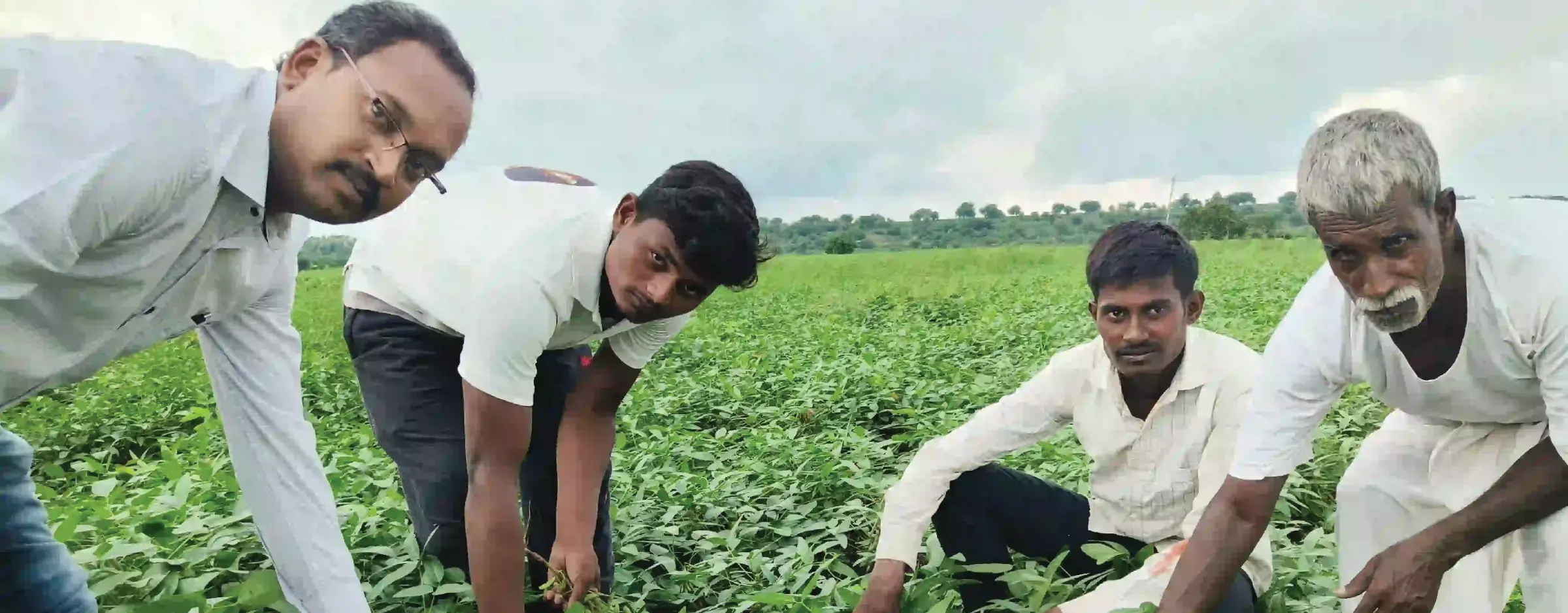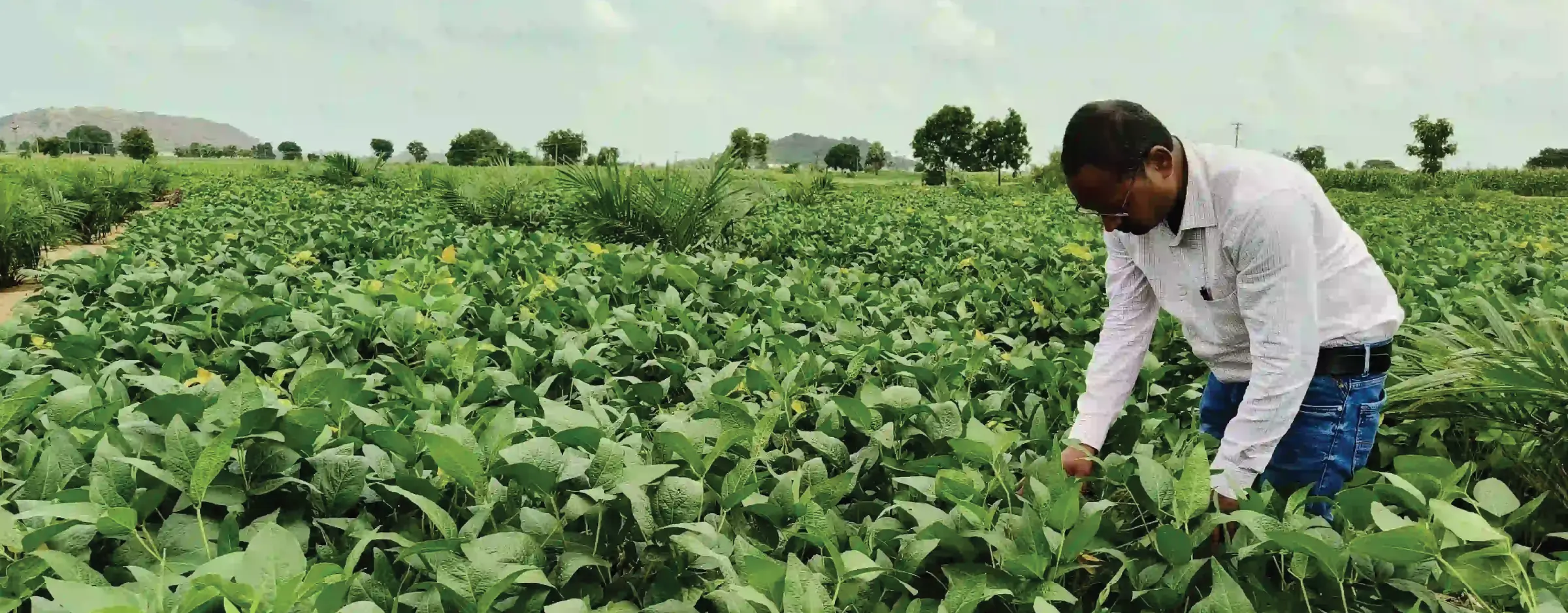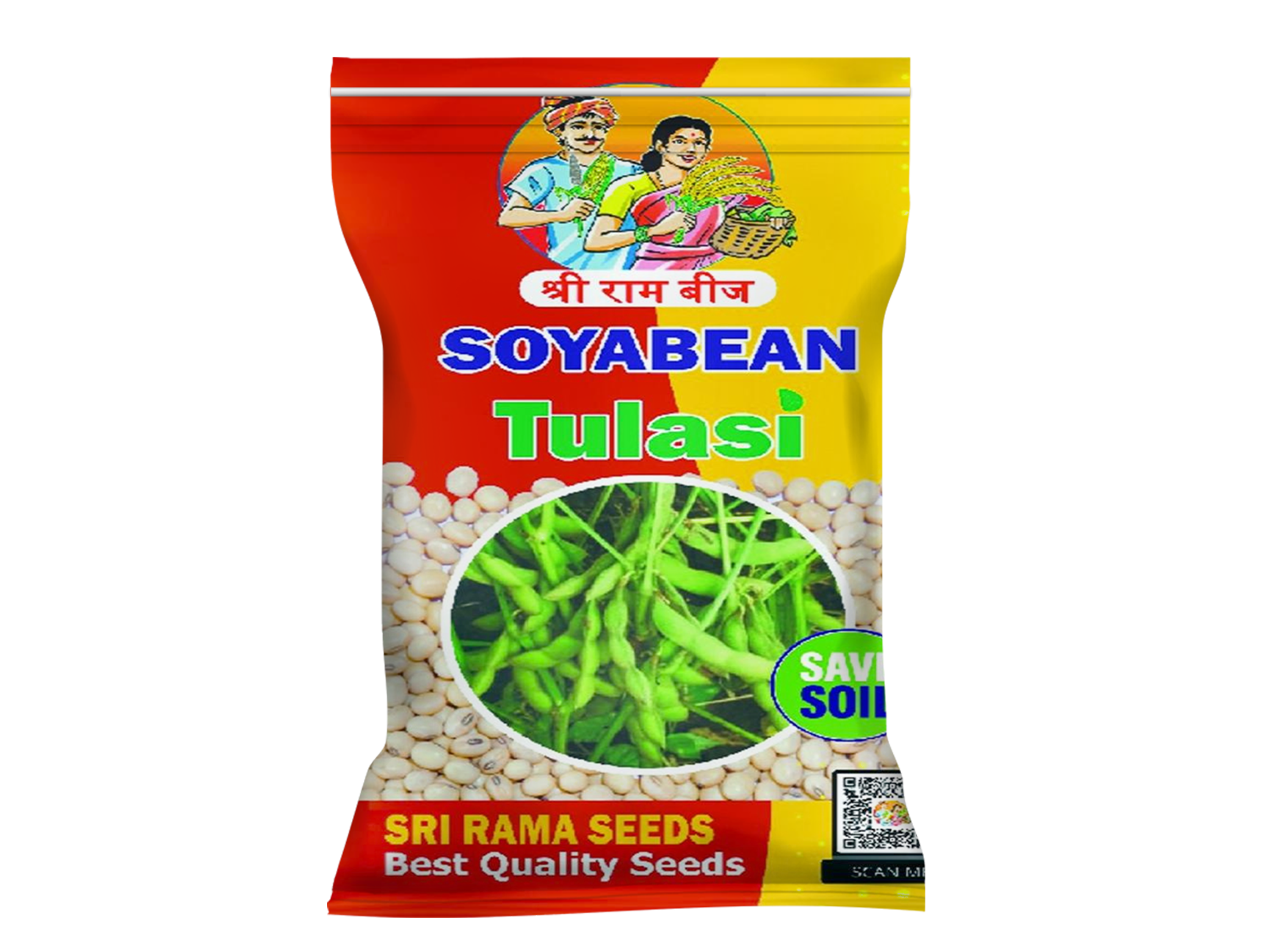Resilient and High-Yielding Soybean for Upland & Low
Rainfall Conditions
TULASI is a high-quality soybean variety, developed for fast
maturity, high pod density, and excellent adaptability to
low-rainfall and upland conditions. With a maturity period
of 82–89 days, this variety ensures early harvesting and
consistent yields. The violet flowers, lanceolate leaves,
and four-seeded pods contribute to higher productivity,
while its black hilum provides a strong market preference.
Additionally, TULASI exhibits strong resistance to root rot,
insect pests, and drought, making it a reliable choice for
commercial soybean farmers.
Challenges & Solutions
Soybean cultivation often presents challenges such as
susceptibility to diseases, drought stress, and inconsistent
yields. TULASI is specifically designed to tackle these
issues while maximizing profitability.
Challenges
Common problems faced in soybean farming include:
-
Inconsistent Pod Formation resulting in low
market-grade
-
Drought Sensitivity
-
Inconsistent Pod Formation
-
Low Seed Density in Conventional Varieties reducing
yield per hectare.
Solutions
TULASI provides exceptional advantages for soybean
growers:
-
Resistant to Root Rot, Insect Pests, and Drought
-
High Pod Density (4 Seeds Per Pod)
-
Fast Maturity (82–89 Days)
-
Adaptability to Upland & Low-Rainfall Areas
Performance and Profitability
Yield Potential (Kg/Ha):
TULASI ensures high seed production, delivering consistent
profits to farmers.
Adoption Rate:
Farmers prefer TULASI for its early maturity, drought
resistance, and high seed count per pod.
Farm Profitability:
With low input requirements and excellent yield stability,
TULASI provides superior returns on investment.
Market Demand:
The black hilum, four-seeded pods, and high adaptability
make TULASI a highly desirable variety for soybean traders
and processors.









